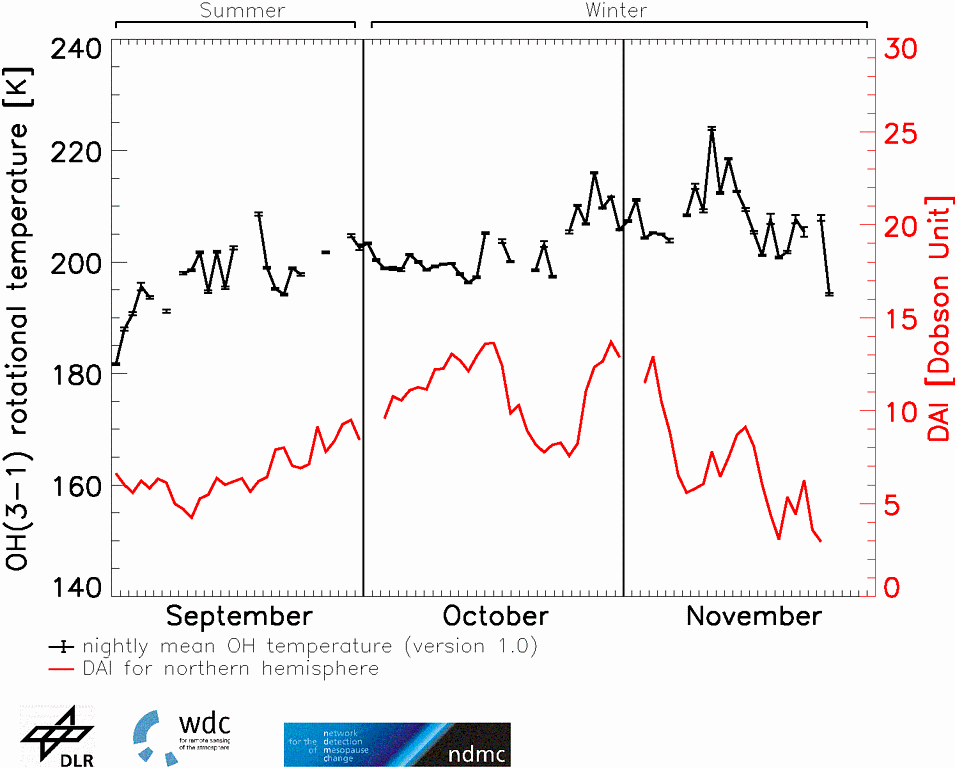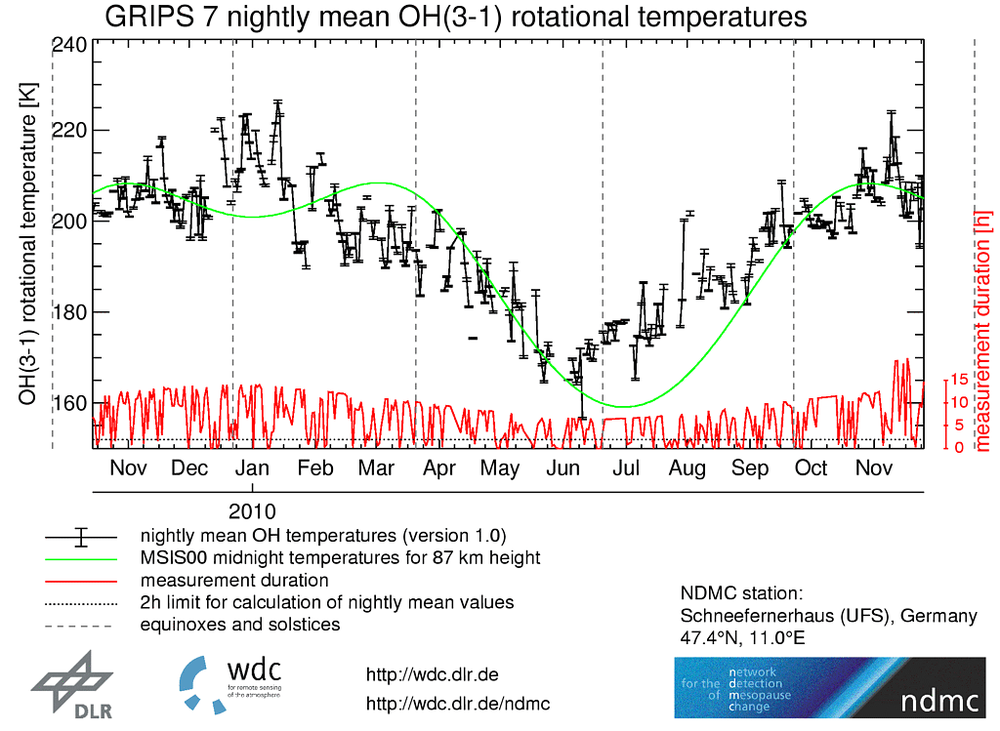Wave covers middle to high atmosphere



Joint analysis of the northern hemispheric dynamic activity index (DAI), which is a measure for large-scale stratospheric dynamics, and the temperature in the upper mesosphere over Oberpfaffenhofen reveals a very similar course of both time series during October and November (Figure 1). A pronounced oscillation with a periodicity of about 16 days is observable in both data records. This is a typical value for so called planetary waves which are wave phenomena covering the whole globe. Due to the prevailing winds they can propagate from the lower into the middle atmosphere (~10 – 100 km) only during winter times. The above-mentioned similar course of these two curves provides direct evidence for the atmosphere being a coupled system: the height difference of the two measurements accounts at least for about 60km as the temperature of the mesopause region is measured in an altitude of about 87 km and the DAI refers to an altitude of around 20-30 km.
Planetary waves are not only visible in temperature, they can also be observed in ozone to some extent being used for the calculation of the DAI. In huge parts of the atmosphere, ozone can be regarded as a chemical relatively stable gas following air movements being caused by planetary waves for example. The DAI is calculated on a routine basis at DLR for both hemispheres, it is updated daily and made available at the ICSU/WMO World Data Center for Remote Sensing of the Atmosphere, WDC-RSAT. Its purpose is the “visualisation” of the activity of planetary waves which characterize the large-scale dynamics. During winter the DAI usually grows intensively until its final collapse taking place approximately in March (figure 2). Associated with this event is the changeover of the atmospheric circulation from winter to summer conditions: the so called stratospheric jet changes its wind direction by 180° according to season, which is in contrast to the jetstream (~ at an altitude of 10 km) blowing the same direction during the whole year. The re- changeover from summer to winter conditions took place in September this year. This fact explains why the time series of DAI and mesopause temperature do not look similar in early September.
Since January 2009 the temperature in the mesopause region is observed routinely at DLR-DFD in Oberpfaffenhofen, too. Each night the infrared spectrometer GRIPS 7, which is placed on the Zugspitze, measures fully automatically the emitted radiation at an altitude around 87 km (figure 3). In this altitude the so-called atmospheric airglow layer is located. The data collected conduce to observation of climate signals in this altitude and are also stored at the ICSU/WMO World Data Center for Remote Sensing of the Atmosphere, WDC-RSAT (see above).
